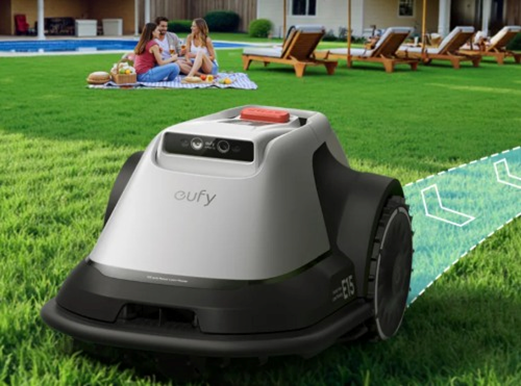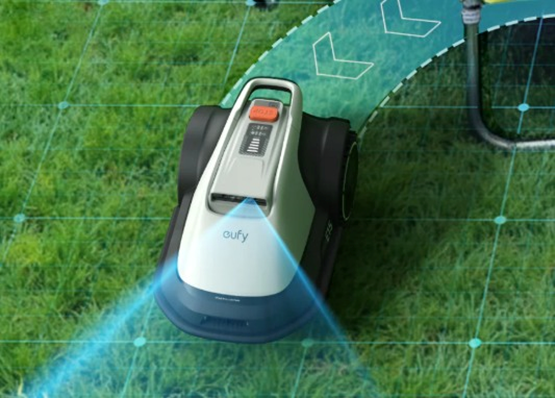Aerating your lawn helps relieve soil compaction, improve water penetration, and promote stronger root growth. Done correctly, it creates the perfect environment for a thicker, greener yard. But to see real results, you need to follow the right steps about how to aerate lawn—before, during, and after aeration. Pairing aeration with consistent mowing using a smart robot mower like the eufy Robot Lawn Mower E15 ensures long-term success with minimal effort.
Steps to Properly Aerate Your Lawn
Prepare the Lawn Before Aeration
Start by clearing the yard. Remove debris, toys, fallen branches, and anything that could obstruct your aerator. Then mow the grass to a manageable height, but don’t scalp it. This helps expose the soil and makes the aeration process more effective. Water the lawn one day before you aerate. Moist soil allows the aerator to penetrate deeply, pulling longer cores. Dry soil resists core removal and can damage equipment. Avoid watering immediately before, as overly wet soil can create a mess and reduce effectiveness. Once aeration is complete, mowing with consistent precision supports new root growth. The eufy E15 handles this automatically. With hands-free auto mapping powered by V-FSD positioning, it plans efficient routes and cuts in clean, uniform parallel lines—ideal for gently maintaining aerated soil without compacting it again.

Choose the Right Equipment and Timing
Use a core aerator that removes soil plugs, not just pokes holes. Plug aerators pull out 2–3 inch cores, allowing air, water, and nutrients to flow freely into the root zone. Avoid spike aerators, which may compact soil further. Time aeration according to your grass type.
Cool-season grasses (like fescue and bluegrass): Best in early spring or fall.
Warm-season grasses (like Bermuda or centipede): Aerate in late spring to early summer.
Avoid aerating during extreme heat or dormancy. Always check soil conditions and wait for moderate moisture and temperatures for the best results.
After aerating, your lawn may look a bit rough—but don’t worry. E15 ensures steady recovery by maintaining proper mowing height across the entire lawn. Its smart coverage detection system ensures no areas are skipped or double-cut, and it’s optimized for flat yards up to 0.2 acres (8,700 sq ft) with grass under 3.5 inches.
Follow Up with Smart Lawn Care
Leave the plugs on the lawn—they’ll break down naturally and return nutrients to the soil. To further boost growth, apply a slow-release fertilizer and overseed if you’re trying to thicken the turf. Keep watering lightly and consistently over the next two weeks. Avoid heavy foot traffic while the lawn recovers. If you mow during this time, avoid scalping the grass or putting pressure on soft areas. This is where E15 excels. It uses 3D perception to navigate safely, avoiding garden features and staying clear of vulnerable zones. With no wires or RTK station needed, setup is quick and easy, even for first-time robot mower users. The mower adapts its path with precision using high-resolution cameras and intelligent algorithms. Plus, with GPS tracking, you always know where it is—and if it detects rain or low light, E15 returns to its dock automatically to avoid damaging your newly aerated soil.

Conclusion
Proper aeration starts with preparation: mow, water, and clean your lawn ahead of time. Use a core aerator, choose the right season based on your grass type, and avoid overly dry or soggy soil. After aerating, keep the soil moist, leave the plugs in place, and mow consistently—but gently. The eufy Robot Lawn Mower E15 makes maintenance easier. With smart path planning, obstacle detection, and automated return features, it delivers consistent care while protecting your aerated lawn. You control it all from your smartphone—even if your yard lacks full Wi-Fi coverage, a 4G connection ensures smooth performance. Aerate correctly, and let E15 handle the rest—so your lawn grows stronger, greener, and healthier with less effort.

